
A close up of the axiobib tractor tire on a tractor
Understanding Parts of the Tractor Tire: Rims, Inner tubes and Valves
SUMMARY:
1- Rims
The tire/rim pairing is an essential element in ensuring that your tractor performs well. That's why it's crucial to confirm the two elements chosen are compatible. To find out how to determine the compatibility, there’s a few steps to follow.
Identify the tire diameter
To ensure that a rim is compatible with a tire, the first thing to check is the diameter, which is measured in inches. The diameter must be the same for your rim as for your tire. It's a bit like shoe size: if you wear a size 10 shoe, you'll have a hard time fitting your foot into a size 8 shoe!
Take as example the dimension 540/65 R30 of the Michelin AXIOBIB 2 range:
In the tire size, the two numbers after the "R" are the Rim diameter. In our example, R30 means that the tire has an inner diameter of 30 inches.
Check the width and profile of the rim
This is the value you get when you match the tire diameter.
On all our tire pages, there is a “Technical Specifications” section that indicates the “recommended rims” and “approved rims” for the requested size and corresponding diameter.
Visit the Michelin AXIOBIB 2 range for an example of technical specifications for the dimension 540/65 R30.
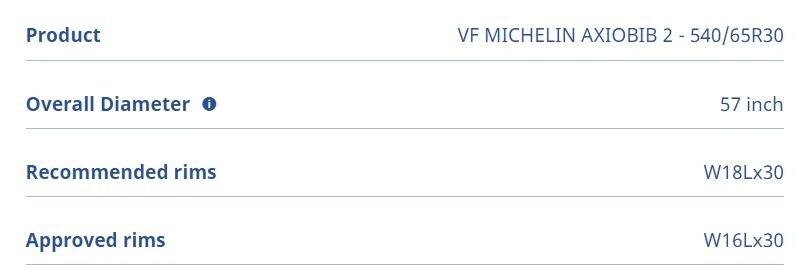
Technical specifications : Checking the width and profile of the rim
We can see that the recommended rim reference for this 30” diameter tire is W18L.
This reference indicates its approved profile and width.
See the tire specs of this dimension: here.
Is your current rim compatible with your new tire?
If you are buying a new tire, you can check whether your current rim is compatible. Generally, the rim size is indicated on your rim.
If your rim is not compatible with the tire you wish to buy, then you will need to choose a different one. If in doubt, consult your dealer.
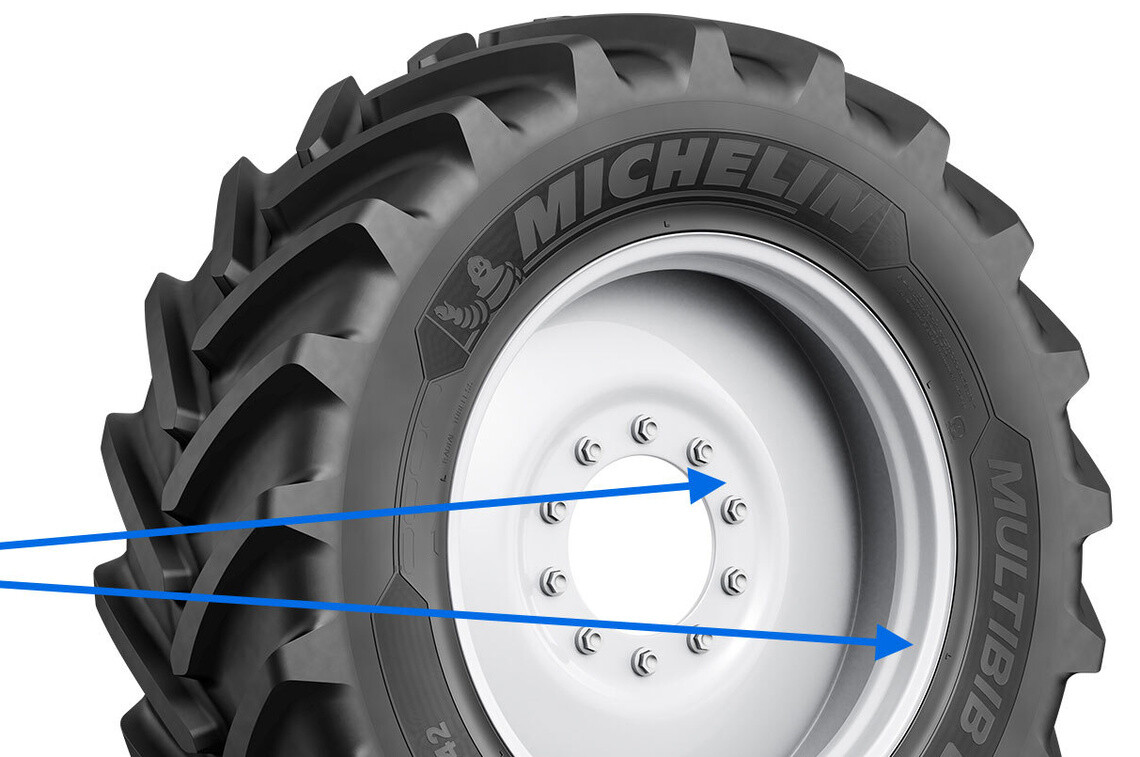
Rim reference positioning
The rim reference appears on the seat or on the disc of the rim
Find out more about rims
The rim reference corresponds to a dimension F (interior width), H (Flange height) and P (Seat width), all three in mm. In our example, W18L corresponds in F to 457.2 mm, in H to 25.4 mm and in P to 33 mm.
Detailed information on rim width and profile can be found in our technical documentation.
What is an O-ring?
Some rims made up of several parts (usually three) require an accessory to ensure they are watertight. This accessory is called an "O-ring". An O-ring is not needed on a one-piece rim.
2 - Inner tubes
The commercial designation of the tire indicates whether the tire is Tubetype (TT) or Tubeless (TL). At Michelin, we only manufacture tubeless tires (i.e. tires without inner tubes) for agricultural machinery.
For example, this commercial designation VF 540/65 R39 158D/155E TL ends with TL, which means that the tire can be mounted without an inner tube (tubeless) on a rim.
If for any reason you wish to fit a tube in your tire, we indicate, if available, a reference for a compatible tube in our table (see our technical documentation or any product sheet). This reference appears in the "Tube (Code)" column.

Reading technical datas: tube code
Note that this reference may be preceded by the letter “M” (eg. “M754”). In our example of a 540/65 R30 tire, the reference for an inner tube is 754.
3 - Valves
With the inner tube reference, you can then consult our "Inner tube and valve references" table to also find the compatible valves.
As in our example you have identified that the tire has a diameter of 30”, you can go directly to the section of the table that corresponds to this diameter. Next, identify the inner tube reference.

Tube code
We can see in this example that the tube whose reference number we had noted (754) corresponds to a TR218A valve.
So now you know which tube and valve are compatible with your tire.
The different types of valves
The following section shows the types of valves. You'll see the differences in terms of shape, length and diameter of the valve hole.
Inner tube valves
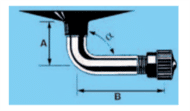
Valve : 10 SC29
10 SC29
A = 15 mm
B = 29 mm
∝ = 90°
∅ = valve hole = 10 mm

Valve: 10 SCH40
10 SCH40
A = 13 mm
B = 27 mm
∝ = 150°
∅ = valve hole = 10,2 mm

Valve: TR13 and TR15
TR13 & TR15
TR13 (ETRTO = V2-01-1): L = 35 mm ; ∅ = valve hole = 11,5 mm
TR15 (ETRTO = V2-01-2): L = 35 mm; ∅ = valve hole = 16 mm

Valve: TR218A
TR218A (ETRTO = V7-01-1)
Air/Water valve
L = 47,5 mm
∅ = valve hole = 15,7 mm
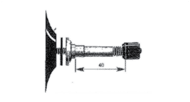
Valve: 1964
1964
L = 40 mm
∅ = valve hole = 9,7 mm

Valve: 1837
1837 (ETRTO = V5-04-1)
A = 27 mm
B = 79 mm
∝ = 80°
∅ = valve hole = 20,5 mm
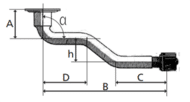
Valve: 582
582 (ETRTO = V3.06.5)
A = 20,5 mm / B = 131 mm
C = 49 mm / D = 62,5 mm
h = 17 mm
∝ = 90°
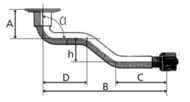
Valve: 1123
1123 (ETRTO = V3.06.8)
A = 24,5 mm / B = 126,5 mm
C = 50,5 mm / D = 61,5 mm
h = 17 mm
∝ = 94°
Tubeless Valves and Air / Water valve tips
Tubeless Valves

Tubeless valve
TR618A (ETRTO = V5-01-1)
Air/water valve
L = 47,5 mm
∅ = valve hole = 15,7 mm
Air/water valve tip

Air/water valve tip
Air/water valve tip
In some cases, you will be able to choose among several types of valves, but that is not always the case because some only have one valve type available for a given inner tube.
Need more advice? Discover our tire buying guide.




